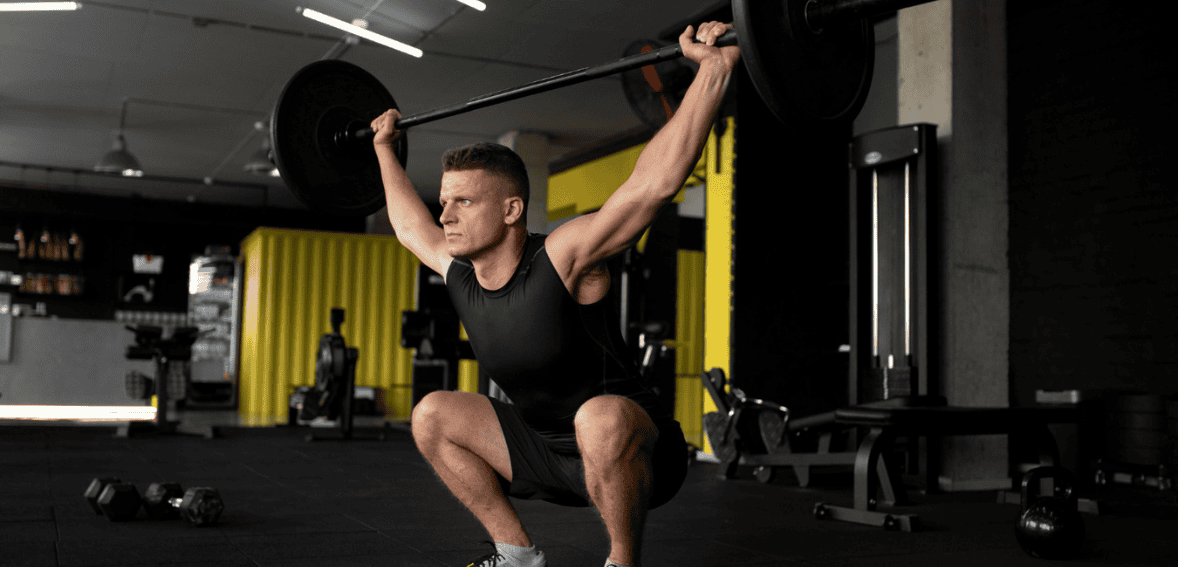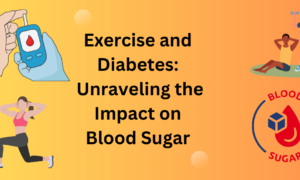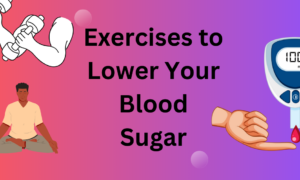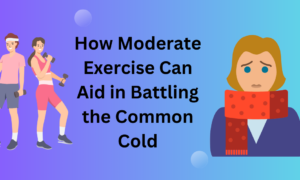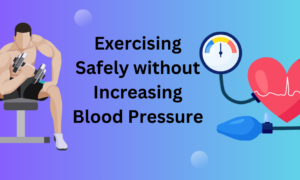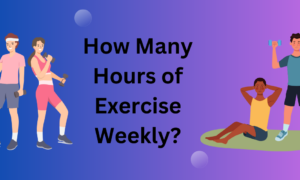Fitness is a personal journey and every goal whether it’s running a marathon or building muscle mass shapes how we train. The principles behind marathon training vs bodybuilding show just how different two fitness paths can be. Marathoners prioritize endurance, stamina and cardiovascular efficiency while bodybuilders prioritize strength, muscle growth and symmetry. Both require discipline, consistency and a well structured plan but the methods are very different.
Understanding these differences helps us create customized workout plans that align with our unique goals. The key is to define the “why” behind training as that’s what dictates everything from nutrition and recovery to daily routines. A clear fitness goal program means every rep, every stride and every meal has a measurable purpose towards our personal transformation.
The Science Behind Endurance Training
Endurance athletes train their bodies to last. In marathon training vs bodybuilding, marathoners rely on aerobic capacity so their workouts focus on delivering oxygen and being energy efficient. Long distance running strengthens the heart and lungs and teaches the muscles to use fat as a steady energy source. Weekly schedules include long runs, tempo runs and interval training to build endurance without exhausting the body.
Strength training is also included but it’s supplementary not central, to improve posture, prevent injury and maintain muscle balance. The goal isn’t muscle size but endurance and resilience. A good training program for marathoners is all about progression, recovery and hydration so the body can adapt safely to increasing mileage over time.
The Power of Resistance in Bodybuilding
On the other end of the spectrum marathon training vs bodybuilding shows how strength athletes operate on a completely different physiological principle. Bodybuilders are after hypertrophy, the process of increasing muscle size by stressing fibers through controlled resistance. Their workouts are based on progressive overload, intensity, volume and weight increase systematically. Compound exercises like squats and bench press develop foundational strength, isolation exercises target specific muscle groups for aesthetic balance.
Unlike marathoners, bodybuilders thrive on anaerobic training, they rely on short bursts of energy from stored glycogen. Rest periods are crucial as muscle repair and growth happens outside the gym. Effective customized workout plans for bodybuilders are split routines, so every muscle group gets attention and enough recovery. Nutrition is just as important, protein intake to support muscle synthesis and reduce breakdown during training cycles.
The Role of Energy Systems in Each Discipline
The energy systems that power marathon training vs bodybuilding are different. Marathoners rely on the aerobic system, fueled by oxygen and carbohydrates and fats. This allows endurance athletes to go at moderate intensity for long periods. Bodybuilders use the phosphagen and glycolytic systems, which provide short bursts of power for heavy lifting.
These systems use stored ATP and glycogen so recovery and replenishment is key. Knowing which energy pathways dominate your sport helps you create customized workout plans that are efficient. For marathoners building aerobic endurance is key, for bodybuilders building muscular energy capacity is key. By tailoring intensity, duration and recovery intervals to these systems you can improve performance specific to your fitness goal program and avoid fatigue and get results.
The Importance of Recovery and Adaptation
Regardless of which side of the marathon training vs bodybuilding debate you’re on, recovery is non-negotiable. For runners recovery prevents overuse injuries and allows muscles, tendons and joints to adapt to long distance stress. For bodybuilders, recovery is the key to muscle growth. Without enough rest protein synthesis slows and fatigue accumulates and you plateau or get injured. Sleep, nutrition and mobility exercises are universal recovery tools but application varies.
Runners may use light jogs or yoga as active recovery while bodybuilders use stretching, foam rolling and rest days. Incorporating rest into your customized workout plans ensures progress doesn’t stall. The body’s ability to adapt to stress is the foundation of all fitness programs so recovery is just as important as the workouts themselves.
Nutrition: Fueling for Performance or Growth
Diet plays a huge role in marathon vs bodybuilding. Endurance athletes need high carb intake to sustain long efforts, as glycogen depletion equals fatigue. Their meals are complex carbs, lean protein and hydration to support energy production and recovery. Bodybuilders have nutrition plans centered around protein and calorie surplus to build muscle.
Macronutrient balance is adjusted based on training cycles, bulking or cutting phases. Supplements like whey protein, BCAAs and creatine are common in bodybuilding, while marathoners use electrolyte drinks and gels for sustained energy. The secret is to match nutrition to training demands. A well structured fitness program includes diet planning into daily routine so energy intake supports both performance and recovery.
Training Volume and Frequency Differences
The distinction between marathon training vs bodybuilding becomes especially clear when comparing volume and frequency. Marathoners often train five to six days a week, with mileage spread across long runs, tempo sessions, and cross-training. Their focus is consistency and endurance rather than intensity per session. Bodybuilders, meanwhile, might train four to five days weekly but with higher intensity and shorter durations.
They structure sessions around specific muscle groups, chest, back, legs, or arms, allowing for targeted growth. This contrast highlights how customized workout plans must reflect the nature of the goal. An endurance athlete gains little from lifting heavy with low reps, just as a bodybuilder wouldn’t benefit from hours of steady cardio. Tailoring workout frequency to physiological demand ensures that every minute spent training contributes directly to the athlete’s defined fitness goal program.
The Psychology of Goal-Oriented Training
While the physical demands differ, both disciplines require strong mental fortitude. Marathoners need patience, persistence, and resilience to endure repetitive, long sessions that test stamina. Bodybuilders rely on focus, discipline, and self-awareness to push through fatigue during heavy lifts and structured diets. The mindset behind marathon training vs bodybuilding demonstrates how motivation shapes results.
Marathoners often find motivation in milestones like race completions and improved pacing, while bodybuilders celebrate visual transformation and strength milestones. Motivation fuels consistency, the greatest determinant of success in any fitness goal program. Mental conditioning, visualization, and goal-setting are as crucial as physical training, transforming obstacles into opportunities for growth and achievement.
Cross-Training: Bridging the Two Worlds
There’s value in blending both approaches. Cross-training helps balance endurance and strength, reducing the weaknesses associated with specializing in one discipline. For example, runners benefit from resistance training to prevent muscle imbalances, while bodybuilders gain from light cardio to improve cardiovascular health. A hybrid customized workout plan might include alternating days of strength and aerobic work, ensuring a well-rounded body capable of power and endurance.
The combination improves posture, mobility, and overall fitness. In this sense, marathon training vs bodybuilding need not be opposing philosophies, they can complement each other. Incorporating diversity in movement patterns prevents burnout, enhances longevity, and supports broader fitness objectives under a unified fitness goal program.
Injury Prevention Strategies
Injury risk is present in both long-distance running and heavy lifting, making prevention an essential part of any customized workout plan. Marathoners face challenges like shin splints, tendonitis, and stress fractures, often caused by overtraining or poor footwear. Bodybuilders, on the other hand, are prone to joint strain, muscle tears, or lower back injuries from improper form. The difference between marathon training vs bodybuilding is how injuries develop and are managed.
Strengthening stabilizer muscles, maintaining flexibility, and practicing proper technique are universal preventive measures. Incorporating warm-ups, cool-downs, and mobility work reduces risks substantially. A strong fitness goal program emphasizes injury prevention as part of training, not as an afterthought. When bodies move efficiently and safely, results become sustainable and progress continues.

Monitoring Progress and Adjusting Plans
Progress tracking keeps motivation alive and ensures training remains effective. For marathoners, metrics like pace, heart rate, and recovery time are key indicators. Bodybuilders monitor muscle growth, body fat percentage, and strength levels. Comparing results over weeks and months allows for adjustments in customized workout plans to maintain momentum. The difference between marathon training vs bodybuilding lies in performance measurement, runners assess endurance improvements, while bodybuilders track aesthetic and strength gains.
Regardless of the goal, progress should be recorded consistently. Digital apps, journals, or wearable trackers can simplify this process. Adjusting volume, intensity, or rest based on these insights ensures alignment with the evolving fitness goal program, leading to long-term success and reduced plateaus.
Coaching and Expert Guidance
Even the most dedicated athletes benefit from expert input. Coaches bring experience and perspective, identifying inefficiencies or risks that individuals may overlook. For marathon training vs bodybuilding, professionals can design periodized plans tailored to individual fitness levels. They provide accountability, correct technique, and optimize workload distribution. In creating customized workout plans, a coach ensures that every phase, be it endurance build-up or muscle hypertrophy, is structured logically.
Additionally, expert guidance in recovery and nutrition prevents burnout and overtraining. Whether preparing for a marathon or a bodybuilding competition, the combination of expertise and motivation creates a structured environment that maximizes results within the framework of a personal fitness goal program.
The Role of Technology in Modern Training
Technology has transformed how athletes approach marathon training vs bodybuilding. Fitness apps, smartwatches, and AI-driven analytics now help personalize progress tracking. Runners can monitor split times, cadence, and oxygen efficiency, while bodybuilders analyze rep speed, volume, and recovery scores. These tools contribute to better customized workout plans by using data to predict fatigue, optimize recovery, and recommend real-time adjustments.
Virtual coaching platforms also bridge access to global expertise, making elite training methods accessible to everyone. Technology turns abstract goals into measurable outcomes, aligning perfectly with modern fitness goal programs. By combining digital precision with human commitment, athletes can maximize performance, stay motivated, and continuously improve in both endurance and strength disciplines.
Balancing Cardio and Strength for Hybrid Athletes
Some athletes want the best of both worlds, endurance and muscle. These “hybrid” athletes must balance the principles of marathon training vs bodybuilding carefully to avoid overtraining. Too much cardio can interfere with muscle gains, while excessive resistance training can reduce running efficiency. The solution lies in strategic scheduling within customized workout plans. Alternating strength and endurance sessions allows the body to adapt to both demands without exhaustion. For instance, a hybrid plan may include three days of resistance work and two days of tempo runs or interval sessions.
Nutrition also needs to reflect dual goals, providing enough calories and macronutrients to support muscle recovery while maintaining cardiovascular endurance. This integrated fitness goal program approach ensures comprehensive development, strong muscles, efficient lungs, and a well-conditioned body capable of both power and stamina.
Mental Endurance and Motivation Strategies
The difference between marathon training vs bodybuilding isn’t just physical, it’s mental. Marathoners rely on patience and sustained focus through long, repetitive efforts, while bodybuilders depend on drive and intensity to push through physically demanding sets. Motivation must evolve with each fitness goal program. Endurance athletes often use visualization and pacing strategies to overcome fatigue during long runs, while bodybuilders use progressive milestones to maintain motivation in the gym.
Mental resilience, therefore, becomes a shared pillar of both training types. Developing discipline through consistent habits, like pre-workout routines or reflection logs, builds a mindset capable of lasting transformation. In both worlds, success is less about initial enthusiasm and more about showing up daily with commitment and intent, fueling not just the body but also the will to improve.
The Social Aspect of Training Communities
Community plays a powerful role in sustaining progress. Marathoners often find motivation in running clubs or training groups that encourage collective accountability. Bodybuilders, on the other hand, thrive in gym environments where peers share techniques, tips, and progress. These communities, both online and offline, reinforce consistency and build a support network. Within customized workout plans, incorporating social engagement, like joining local races or gym challenges, adds enjoyment and variety.
The difference between marathon training vs bodybuilding communities lies in focus: runners celebrate endurance milestones, while lifters celebrate visible gains. Yet, both foster belonging and motivation, key elements in maintaining any fitness goal program. A supportive environment transforms individual effort into shared success, reminding athletes that even personal goals are easier to achieve with collective encouragement.
Aging Gracefully with Evolving Training Goals
As fitness journeys progress, so do goals. A younger athlete may pursue extreme endurance or muscle definition, but priorities often shift toward longevity, flexibility, and health with age. Understanding how marathon training vs bodybuilding adapt to aging is vital. Endurance training helps maintain heart health, while resistance training preserves muscle mass and bone density, both crucial as metabolism slows. Creating customized workout plans that accommodate recovery time, joint care, and mobility ensures sustainable progress.
The focus moves from competition to well-being, integrating balanced cardio and strength for overall vitality. A long-term fitness goal program acknowledges that fitness isn’t static, it evolves with life stages, continuing to empower individuals through strength, endurance, and a commitment to lifelong movement.
Lifestyle Alignment and Long-Term Sustainability
Sustainability is often overlooked when comparing marathon training vs bodybuilding, yet it defines long-term success. Training must align with lifestyle, career, and family commitments to remain consistent. Marathoners balance running schedules with rest and nutrition, while bodybuilders manage meal prepping, gym sessions, and recovery. Both require time management and adaptability. A customized workout plan that fits seamlessly into one’s life prevents burnout and promotes balance.
Over time, fitness evolves from a short-term challenge to a lifelong practice. Maintaining health, flexibility, and motivation becomes more valuable than achieving short-term results. The most effective fitness goal programs emphasize this balance, building strength, endurance, and resilience not just for events or appearances, but for a sustainable, healthy lifestyle.

